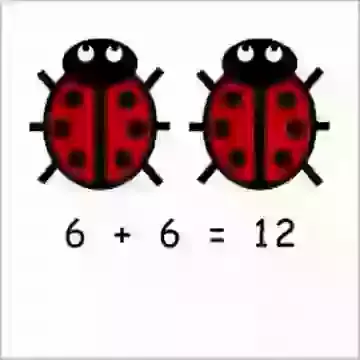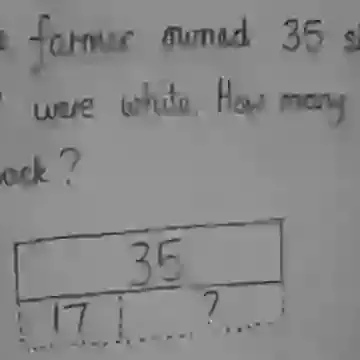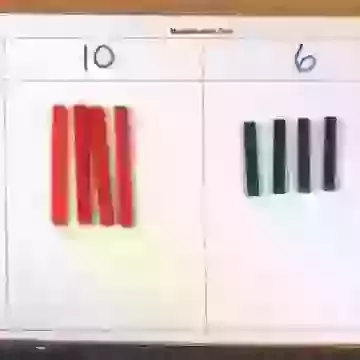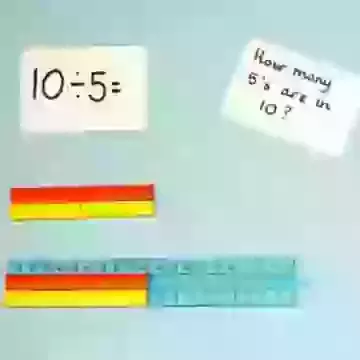Written Methods of Calculation Policy March 2024
The National Curriculum for mathematics aims to ensure that all pupils:
- become fluent in the fundamentals of mathematics, including through varied and frequent practice with increasingly complex problems over time, so that pupils have conceptual understanding and are able to recall and apply their knowledge rapidly and accurately to problems
- reason mathematically by following a line of enquiry, conjecturing relationships and generalisations, and developing an argument, justification or proof using mathematical language
- can solve problems by applying their mathematics to a variety of routine and non-routine problems with increasing sophistication, including breaking down problems into a series of simpler steps and persevering in seeking solutions.
This written calculations policy sets out how we teach the progression of children’s use of written methods of calculation.
Calculation strands of programmes of study for each year group as specified in ‘The national curriculum in England’, framework document (updated July 2014)
https://www.gov.uk/government/publications/national-curriculum-in-england-mathematics-programmes-of-study/national-curriculum-in-england-mathematics-programmes-of-study
Maths curriculum evening for parents
We had well attended parent information evenings outlining the strategies we use in school. The following information was shared:
KS1 - Year 1 and 2 Maths Meeting Information KS2 - Year 3 and 4 Maths Meeting Information KS2 - Year 5 and 6 Maths meeting Information
Below is the full calculation policy.
Calculating (Statutory Requirements)
- Year 1
-
Addition and Subtraction
- read, write and interpret mathematical statements involving addition (+), subtraction (-) and equals (=) signs
- represent and use number bonds and related subtraction facts within 20
- add and subtract one-digit and two-digit numbers to 20, including zero
- solve one-step problems that involve addition and subtraction, using concrete objects and pictorial representations, and missing number problems such as 7 = - 9.
Multiplication and Division
- solve one-step problems involving multiplication and division, by calculating the answer using concrete objects, pictorial representations and arrays with the support of the teacher.
- Year 2
-
Addition and Subtraction
- solve problems with addition and subtraction:
- using concrete objects and pictorial representations, including those involving numbers, quantities and measures
- applying their increasing knowledge of mental and written methods
- recall and use addition and subtraction facts to 20 fluently, and derive and use related facts up to 100
- add and subtract numbers using concrete objects, pictorial representations, and mentally, including:
- a two-digit number and ones
- a two-digit number and tens
- two two-digit numbers
- adding three one-digit numbers
- show that addition of two numbers can be done in any order (commutative) and subtraction of one number from another cannot
- recognise and use the inverse relationship between addition and subtraction and use this to check calculations and missing number problems.
Multiplication and Division
- recall and use multiplication and division facts for the 2, 5 and 10 multiplication tables, including recognising odd and even numbers
- calculate mathematical statements for multiplication and division within the multiplication tables and write them using the multiplication (×), division (÷) and equals (=) signs
- show that multiplication of two numbers can be done in any order (commutative) and division of one number by another cannot
- solve problems involving multiplication and division, using materials, arrays, repeated addition, mental methods, and multiplication and division facts, including problems in contexts.
- Year 3
-
Addition and Subtraction
- add and subtract numbers mentally, including:
- a three-digit number and ones
- a three-digit number and tens
- a three-digit number and hundreds
- add and subtract numbers with up to three digits, using formal written methods of columnar addition and subtraction
- estimate the answer to a calculation and use inverse operations to check answers
- solve problems, including missing number problems, using number facts, place value, and more complex addition and subtraction.
Multiplication and Division
- recall and use multiplication and division facts for the 3, 4 and 8 multiplication tables
- write and calculate mathematical statements for multiplication and division using the multiplication tables that they know, including for two-digit numbers times one-digit numbers, using mental and progressing to formal written methods
- solve problems, including missing number problems, involving multiplication and division, including integer scaling problems and correspondence problems in which n objects are connected to m objects.
- Year 4
-
Addition and Subtraction
- add and subtract numbers with up to 4 digits using the formal written methods of columnar addition and subtraction where appropriate
- estimate and use inverse operations to check answers to a calculation
- solve addition and subtraction two-step problems in contexts, deciding which operations and methods to use and why.
Multiplication and Division
- recall multiplication and division facts for multiplication tables up to 12 × 12
- use place value, known and derived facts to multiply and divide mentally, including: multiplying by 0 and 1; dividing by 1; multiplying together three numbers
- recognise and use factor pairs and commutativity in mental calculations
- multiply two-digit and three-digit numbers by a one-digit number using formal written layout
- solve problems involving multiplying and adding, including using the distributive law to multiply two digit numbers by one digit, integer scaling problems and harder correspondence problems such as n objects are connected to m objects.
- Year 5
-
Addition and Subtraction
- add and subtract whole numbers with more than 4 digits, including using formal written methods (columnar addition and subtraction)
- add and subtract numbers mentally with increasingly large numbers
- use rounding to check answers to calculations and determine, in the context of a problem, levels of accuracy
- solve addition and subtraction multi-step problems in contexts, deciding which operations and methods to use and why.
Multiplication and Division
- solve problems involving multiplication and division where larger numbers are used by decomposing them into their factors
- multiply numbers up to 4 digits by a one- or two-digit number using a formal written method, including long multiplication for two-digit numbers
- multiply and divide numbers mentally drawing upon known facts
- divide numbers up to 4 digits by a one- digit number using the formal written method of short division and interpret remainders appropriately for the context
- solve problems involving addition, subtraction, multiplication and division and a combination of these, including understanding the meaning of the equals sign
- solve problems involving multiplication and division, including scaling by simple fractions and problems involving simple rates.
- Year 6
-
Multiplication and Division
- multiply multi-digit numbers up to 4 digits by a two-digit whole number using the formal written method of long multiplication
- divide numbers up to 4 digits by a two-digit whole number using the formal written method of long division, and interpret remainders as whole number remainders, fractions, or by rounding, as appropriate for the context
- perform mental calculations, including with mixed operations and large numbers.
- use their knowledge of the order of operations to carry out calculations involving the four operations
- solve addition and subtraction multi-step problems in contexts, deciding which operations and methods to use and why
- solve problems involving addition, subtraction, multiplication and division
- use estimation to check answers to calculations and determine, in the context of a problem, levels of accuracy.
The Stages
It is recognised that prior to all written stages that a great deal of unwritten foundation work will have taken place and children gain a basic grasp of number. It is important that children have a clear and firm understanding of one stage before progressing fully to the next stage. In most cases it is vital that all stages are taught in order and that children have a secure understanding of the process before moving on. This will ensure children should always have a “fall back” written calculation method when faced with any problem. The very beginnings of calculation involves transferring the abstract concept of number to the physical and then to written numbers. Formation of numbers must be taught and should be reflected in the fonts that are used in school.
Early Understanding of Number
In the early stages (typically in Early Years, moving into Year 1) children should be introduced to numbers in a variety of ways. These will include:
| Numicon |
Objects for representation, including more than and less than |
| Number tracks and lines |
Number lines – 0 to 10 and 0 to 30 |
| Introduction to the 100 square |
Children should be taught to look for patterns at every opportunity |
|
Numbers as labels
|
The language of addition and subtraction (e.g. 6 and 4 more...)
|
|
Compare equal and unequal groups
|
Explore the difference between odd and even numbers
|
|
Number composition
|
Recording numbers in different ways
|
|
Doubling
|
Subitising (recognising quantities without counting)
|
|
Sharing quantities equally
|
|
Using Number Lines
The number line is a very useful tool to help all operations and should be introduced to children in a number of settings, both vertically and horizontally, numbered and blank. Bead sticks, metre rules, tape measures etc. can all help this introduce the concept.
It is important that children are able to distinguish between numbers that are set in place on the line and any calculations taking place. In order to ensure fidelity any numbers written below the line relate to set numbers on the number line. Those numbers written above the line should relate to calculations (e.g. an arrow +1). It is important to teach children to plan their calculation (estimate) in order to ensure sufficient space is allocated. This may involve steps in both directions.
Mental Strategies
It is vital that mental strategies accompany written calculation strategies throughout the school. Children should be taught that mental strategies are different from compact written methods. Vital elements of this toolkit include a secure knowledge of number bonds, place value, partitioning and chunking. Counting strategies (age appropriate) should take place in all years to include counting on and backwards in various steps and starting points along with fractions and decimals. Times table facts should also be learned.






